-
 Bitcoin
Bitcoin $116800
1.37% -
 Ethereum
Ethereum $3832
5.15% -
 XRP
XRP $3.063
2.69% -
 Tether USDt
Tether USDt $1.000
0.04% -
 BNB
BNB $774.1
0.84% -
 Solana
Solana $170.7
1.56% -
 USDC
USDC $0.0000
0.01% -
 Dogecoin
Dogecoin $0.2142
5.31% -
 TRON
TRON $0.3406
1.90% -
 Cardano
Cardano $0.7635
3.81% -
 Hyperliquid
Hyperliquid $39.55
2.42% -
 Sui
Sui $3.732
7.71% -
 Stellar
Stellar $0.4127
4.25% -
 Chainlink
Chainlink $17.80
6.91% -
 Bitcoin Cash
Bitcoin Cash $576.7
1.66% -
 Hedera
Hedera $0.2521
3.28% -
 Ethena USDe
Ethena USDe $1.001
0.01% -
 Avalanche
Avalanche $22.66
2.19% -
 Litecoin
Litecoin $121.3
2.98% -
 UNUS SED LEO
UNUS SED LEO $8.959
-0.31% -
 Toncoin
Toncoin $3.325
2.88% -
 Shiba Inu
Shiba Inu $0.00001263
2.84% -
 Uniswap
Uniswap $10.11
4.79% -
 Polkadot
Polkadot $3.769
3.22% -
 Dai
Dai $1.000
0.01% -
 Bitget Token
Bitget Token $4.413
1.46% -
 Monero
Monero $272.9
-4.98% -
 Cronos
Cronos $0.1488
4.22% -
 Pepe
Pepe $0.00001088
4.01% -
 Aave
Aave $273.0
4.73%
What is the position limit of HTX contract? Are there any requirements for large investors to hold positions?
HTX sets position limits at 10,000 contracts for perpetuals and 5,000-15,000 for futures, requiring large investors to undergo KYC and provide proof of funds.
May 07, 2025 at 04:57 am
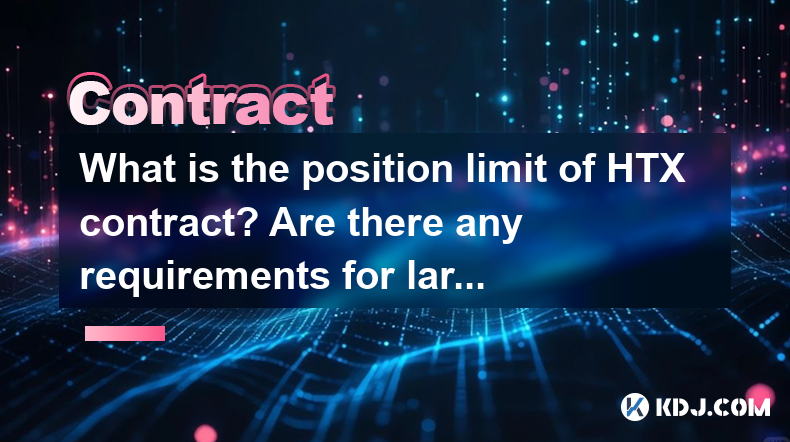
The position limit of HTX contract and the requirements for large investors to hold positions are critical aspects for traders engaging with the HTX platform. Understanding these limits and requirements can help traders manage their portfolios effectively and comply with the platform's rules.
Understanding Position Limits on HTX
Position limits on HTX are set to manage the risk associated with trading contracts. These limits vary depending on the type of contract and the trading pair. For example, perpetual contracts might have different limits compared to futures contracts. The primary goal of these limits is to prevent market manipulation and ensure a stable trading environment.
For most trading pairs on HTX, the position limit for perpetual contracts is set at 10,000 contracts per user. This means that a trader cannot hold more than 10,000 contracts in a single trading pair at any given time. For futures contracts, the limits can vary, typically ranging from 5,000 to 15,000 contracts depending on the specific contract and its expiration date.
Requirements for Large Investors
Large investors, often referred to as whales, are subject to additional scrutiny and requirements on HTX. These requirements are in place to ensure that large positions do not adversely affect the market. To hold large positions, investors must meet certain criteria set by HTX.
Firstly, large investors need to go through a KYC (Know Your Customer) verification process. This process involves providing detailed personal information and documentation to verify identity and financial status. The KYC process helps HTX ensure that the investor is legitimate and not engaged in illicit activities.
Secondly, large investors may need to provide proof of funds. This requirement ensures that the investor has the financial capacity to hold large positions without risking default. Proof of funds can include bank statements, investment portfolios, or other financial documents that demonstrate the investor's liquidity.
Monitoring and Compliance
HTX employs sophisticated monitoring systems to ensure that traders comply with position limits and other requirements. These systems track trading activity in real-time and can alert the platform to any potential breaches of the rules.
If a trader exceeds the position limit, HTX may take several actions. The platform might issue a warning to the trader, requiring them to reduce their position within a specified timeframe. In more severe cases, HTX might automatically close out the excess positions to bring the trader back within the limit.
Adjusting Position Limits
HTX periodically reviews and adjusts position limits based on market conditions and trading volumes. These adjustments are made to ensure that the limits remain appropriate and effective in managing risk. Traders are advised to stay informed about any changes to position limits by regularly checking the HTX platform announcements.
Impact on Trading Strategies
Understanding the position limits and requirements for large investors can significantly impact trading strategies. Traders need to consider these limits when planning their trades and managing their risk exposure. For instance, a trader might need to spread their positions across multiple trading pairs to stay within the limits.
Additionally, large investors might need to adjust their strategies to comply with the proof of funds and KYC requirements. These requirements can influence the timing and size of their trades, as they may need to prepare the necessary documentation before entering large positions.
Practical Steps for Managing Positions
To manage positions effectively within the HTX platform's limits, traders can follow these steps:
- Monitor Your Positions: Use the HTX trading dashboard to keep an eye on your current positions and ensure they do not exceed the limits.
- Set Alerts: Configure alerts within the HTX platform to notify you when your positions approach the limit.
- Diversify: Consider diversifying your positions across multiple trading pairs to stay within the limits while still achieving your trading goals.
- Stay Informed: Regularly check HTX announcements for any changes to position limits or other requirements.
- Prepare Documentation: If you are a large investor, ensure you have the necessary documentation ready for KYC and proof of funds requirements.
Frequently Asked Questions
Q1: Can I request an increase in my position limit on HTX?
A1: HTX does not typically allow individual traders to request increases in position limits. However, the platform may adjust limits based on market conditions and trading volumes. Traders should monitor HTX announcements for any changes to position limits.
Q2: What happens if I accidentally exceed the position limit on HTX?
A2: If you exceed the position limit, HTX may issue a warning and require you to reduce your position within a specified timeframe. In severe cases, the platform might automatically close out the excess positions to bring you back within the limit.
Q3: Are there different position limits for different types of contracts on HTX?
A3: Yes, position limits can vary depending on the type of contract. Perpetual contracts typically have a limit of 10,000 contracts per user, while futures contracts may have limits ranging from 5,000 to 15,000 contracts depending on the specific contract and its expiration date.
Q4: How often does HTX review and adjust position limits?
A4: HTX periodically reviews and adjusts position limits based on market conditions and trading volumes. These adjustments are made to ensure that the limits remain appropriate and effective in managing risk. Traders should regularly check HTX announcements for any changes to position limits.
Disclaimer:info@kdj.com
The information provided is not trading advice. kdj.com does not assume any responsibility for any investments made based on the information provided in this article. Cryptocurrencies are highly volatile and it is highly recommended that you invest with caution after thorough research!
If you believe that the content used on this website infringes your copyright, please contact us immediately (info@kdj.com) and we will delete it promptly.
- Ripple, Rail, and Stablecoin Payments: A $200M Power Play
- 2025-08-07 22:50:12
- Punisher Coin Presale: The Next $Trump? Aiming for 100x Gains!
- 2025-08-07 22:50:12
- Riding the Crypto Wave: Presale Cryptos, Cold Wallets, and the BTC Bull Run
- 2025-08-07 23:10:12
- Crypto's Wild Ride: Punisher Coin, Popcat, and the Meme Coin Mania
- 2025-08-07 23:10:12
- Bitcoin Price, XRP Prediction, Cryptocurrency: Navigating the Wild West of Digital Assets
- 2025-08-07 23:15:12
- WiMi, Quantum Computing, and AR Tech: Navigating the Future Today
- 2025-08-07 22:30:12
Related knowledge
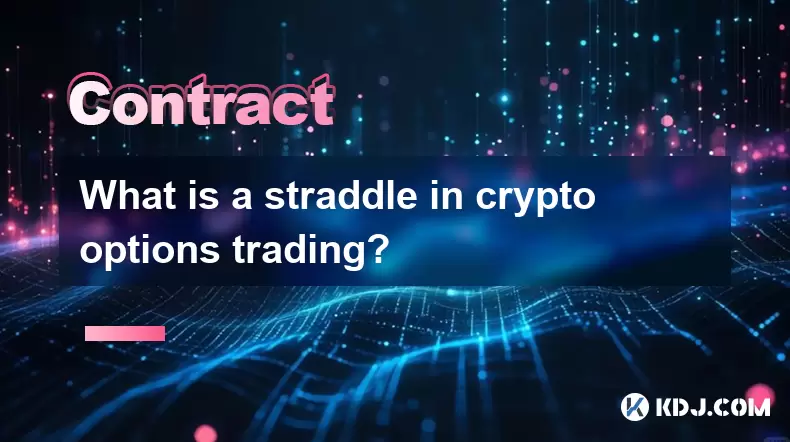
What is a straddle in crypto options trading?
Aug 07,2025 at 11:15pm
Understanding the Basics of a Straddle in Crypto OptionsA straddle is an options trading strategy used when a trader expects significant price movemen...
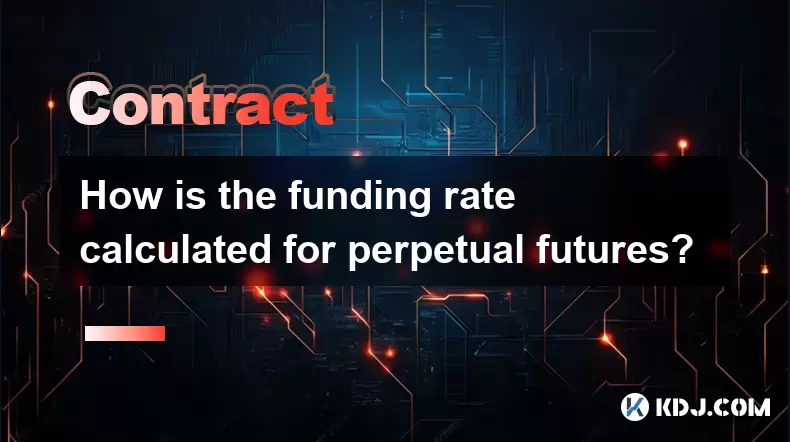
How is the funding rate calculated for perpetual futures?
Aug 07,2025 at 11:36pm
Understanding the Basics of Perpetual FuturesPerpetual futures are a type of derivative contract that does not have an expiration date, allowing trade...

What programming languages are used for smart contracts?
Aug 07,2025 at 06:07pm
Understanding Smart Contracts and Their Execution EnvironmentSmart contracts are self-executing programs deployed on blockchain networks that automati...
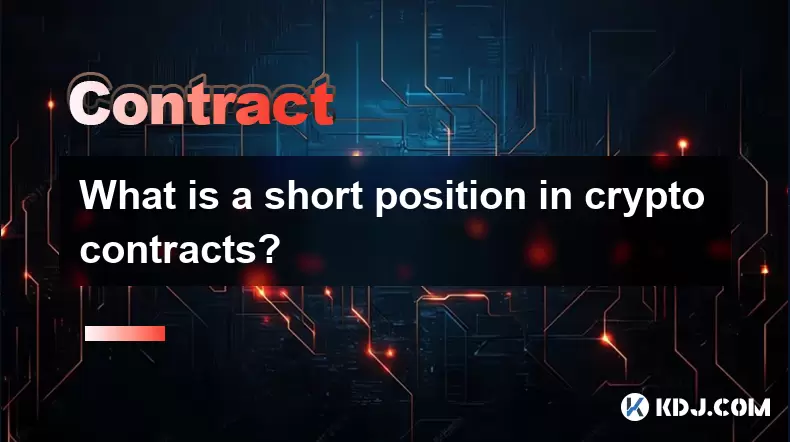
What is a short position in crypto contracts?
Aug 07,2025 at 11:42pm
Understanding the Concept of a Short Position in Crypto ContractsA short position in crypto contracts refers to a trading strategy where a trader prof...
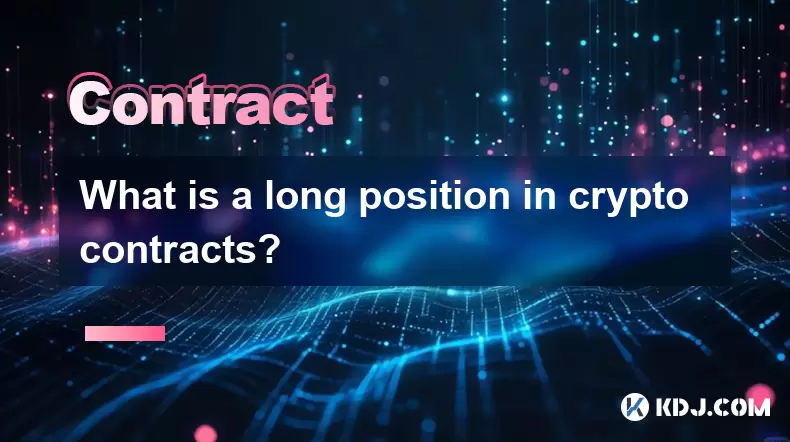
What is a long position in crypto contracts?
Aug 07,2025 at 06:29pm
Understanding the Concept of a Long Position in Crypto ContractsA long position in crypto contracts refers to a trading strategy where a trader buys a...

Why is my Bitstamp futures position being liquidated?
Jul 23,2025 at 11:08am
Understanding Futures Liquidation on BitstampFutures trading on Bitstamp involves borrowing funds to open leveraged positions, which amplifies both po...

What is a straddle in crypto options trading?
Aug 07,2025 at 11:15pm
Understanding the Basics of a Straddle in Crypto OptionsA straddle is an options trading strategy used when a trader expects significant price movemen...

How is the funding rate calculated for perpetual futures?
Aug 07,2025 at 11:36pm
Understanding the Basics of Perpetual FuturesPerpetual futures are a type of derivative contract that does not have an expiration date, allowing trade...

What programming languages are used for smart contracts?
Aug 07,2025 at 06:07pm
Understanding Smart Contracts and Their Execution EnvironmentSmart contracts are self-executing programs deployed on blockchain networks that automati...

What is a short position in crypto contracts?
Aug 07,2025 at 11:42pm
Understanding the Concept of a Short Position in Crypto ContractsA short position in crypto contracts refers to a trading strategy where a trader prof...

What is a long position in crypto contracts?
Aug 07,2025 at 06:29pm
Understanding the Concept of a Long Position in Crypto ContractsA long position in crypto contracts refers to a trading strategy where a trader buys a...

Why is my Bitstamp futures position being liquidated?
Jul 23,2025 at 11:08am
Understanding Futures Liquidation on BitstampFutures trading on Bitstamp involves borrowing funds to open leveraged positions, which amplifies both po...
See all articles

























































































